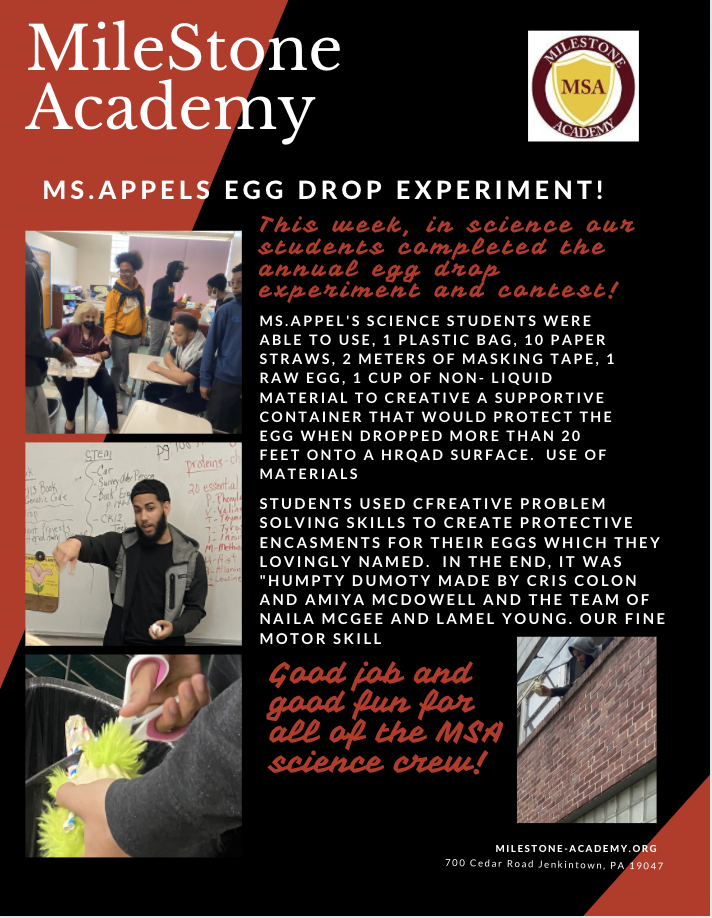

Egg Drop Challenge 2022
The Egg Drop Challenge is MileStone Academy’s most loved learning activities throughout the school year. This is a STEM (science, technology, engineering, and mathematics) lesson that reinforces the design method and working in teams to solve a problem.
What Is An Egg Drop Experiment?
The Egg Drop is a classic science class experiment for middle school or high school students. Students are given an egg to drop from a high point (such as the school’s roof) onto a hard surface (such as the parking lot). They must design a carrier for the egg to house it during the drop. Typical carriers are milk cartons or shoe boxes.
The students can change the carrier by adding wings, parachutes, foam interiors, or even marshmallow cushions. The students form hypotheses about which egg carriers will effectively protect the egg and then test those hypotheses.
The experiment is not just for fun — although students do enjoy it. It is intended to teach students about the relationships between force and momentum.
Inertia
Newton’s Laws of Motion are the basic principles illustrated in the egg drop experiment. Sir Isaac Newton published his Laws of Motion in 1687 and fundamentally altered scientists’ understanding of the world by describing the relationship between force and motion. The first of these laws is referred to as The Law of Inertia. In basic terms, an object in motion will stay in motion unless an external force acts upon it, and an object at rest will remain at rest unless an external force acts upon it.
Velocity
In Newton’s Second Law, he discusses the direct relationship between the external forces acting upon an object and the object’s change in momentum. The force increases as the time required for the change decreases. Suppose a train moves along at a steady pace and needs to decelerate. In that case, the force experienced by the passengers will be more significant as the time for deceleration is shorter.
The Egg
The objective of the egg drop experiment is to keep the egg from breaking as it decelerates. It becomes clear from Newton’s Laws that to minimize the force experienced by the egg at impact, students designing the egg carriers must increase the time over which the egg is brought to rest or decrease the egg’s velocity at the time of the crash.
The Carrier
To decrease the egg’s velocity upon impact, students must design their egg carriers to have increased air resistance. An increased surface area on the page, such as a flying disc shape or a parachute, will cause the egg to hit the ground slower. To increase the time the egg comes to rest, students must provide their egg with something to absorb some of the force of impact. A sponge or other cushion in their carrier will keep the egg from stopping instantly when it hits the ground; the egg will continue its motion for a few nanoseconds, decreasing the force.
Students also learn to form and test hypotheses and write up their observations in an organized way from this experiment.
Watch this space for more information on the history of egg drop experiments with Ms. Sheila Appel.
Resources
Joel Garrison. Background Information on Egg Drop Experiments. April 28, 2018. Sciencing.com.
Joel Garrison. The Science Behind the Egg Drop Experiment. April 28, 2018. Sciencing.com.
Egg Drop Experiments. Inspiration Laboratories.com. April 1, 2019.
Here are some other MileStone Academy blogs that may interest you:


